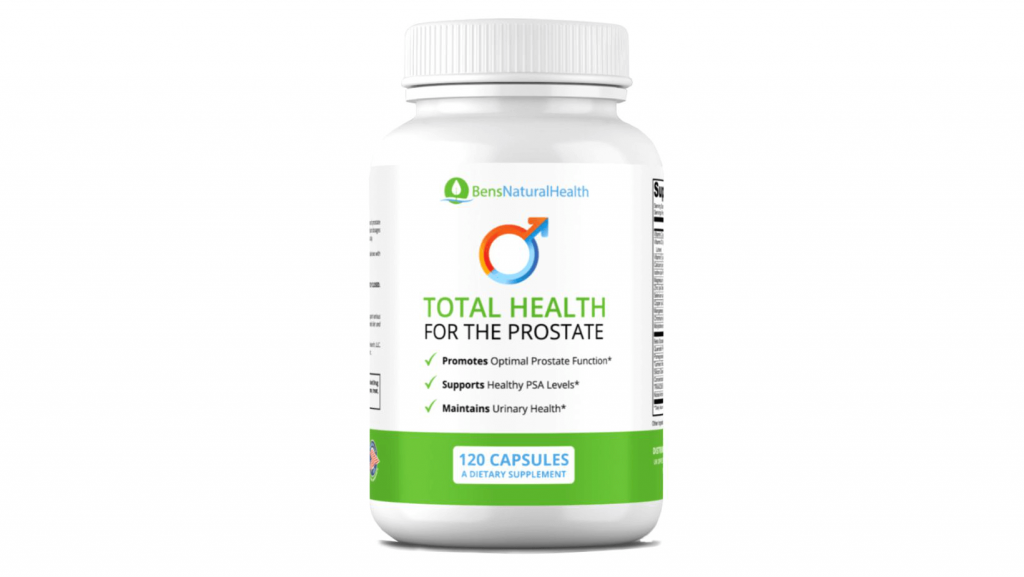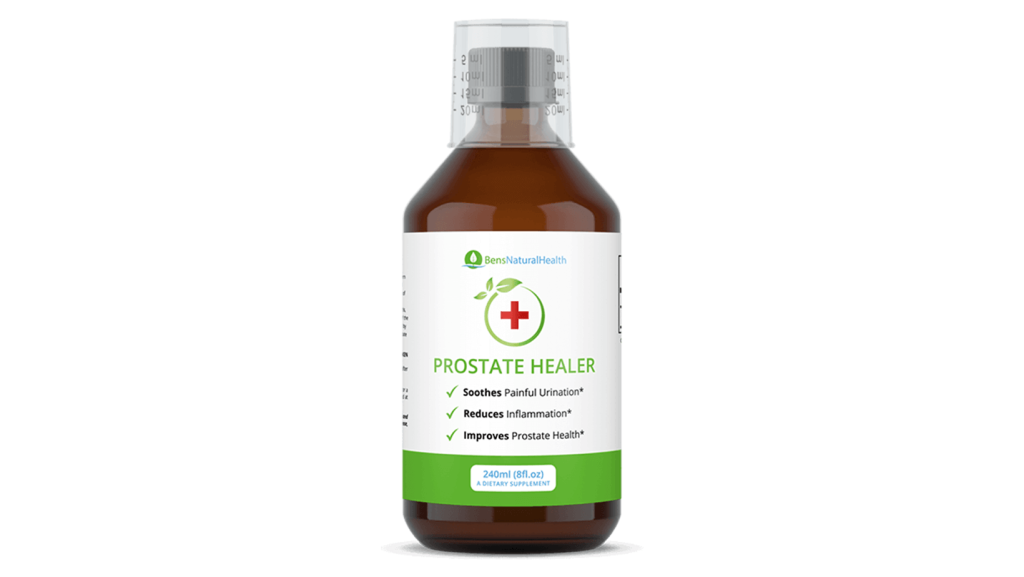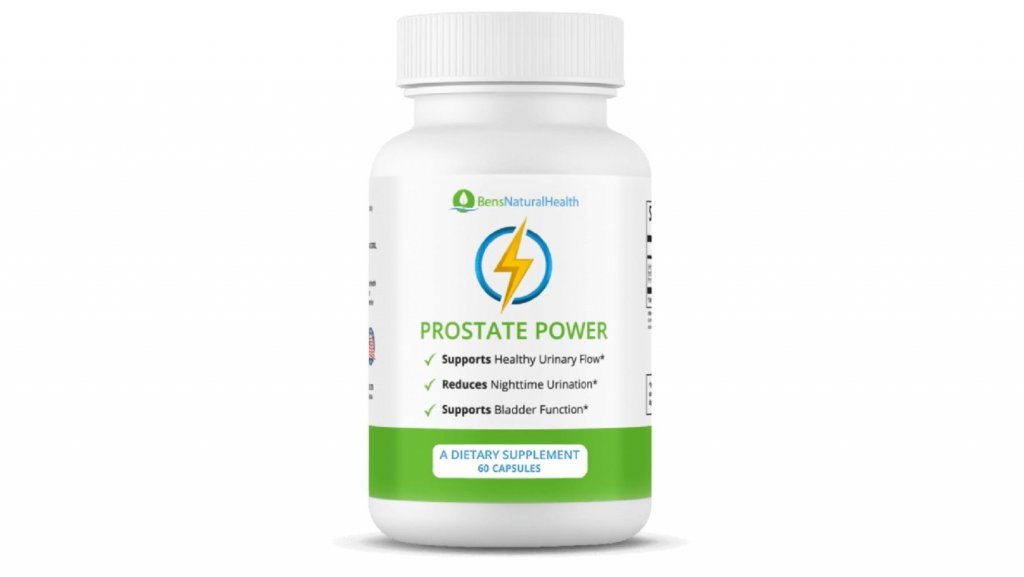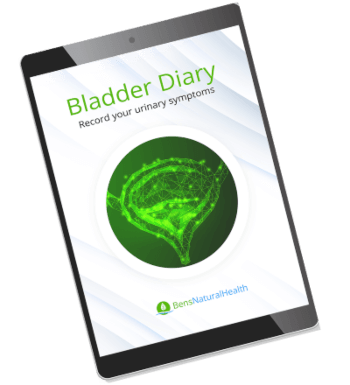- What are LUTS (lower urinary tract symptoms)?
- What can cause LUTS or lower urinary tract obstruction in men?
- How does the bladder work?
- How are lower urinary tract symptoms diagnosed?
- How can you effectively manage lower urinary tract symptoms?
- Medications
- Lifestyle modifications
- Natural treatments
- Ben’s Natural Supplements For Prostate Health
- Get help managing your urinary symptoms
- Conclusion
- Source
Lower urinary tract infections are one of the most common ailments you can find in women, but what about men?
Lower urinary tract symptoms in men commonly appear after a certain age.
They are usually related to benign prostatic hyperplasia (BPH).
What are LUTS (lower urinary tract symptoms)?
Lower urinary tract symptoms (LUTS) are usually given other terms, such as prostatism or clinical benign prostatic hyperplasia.
There are many different causes of lower urinary tract symptoms in men.
Relating all of them to the function of the prostate is oversimplifying (2).
There are three main types of LUTS (3):
1) Storage LUTS: Also known as irritative symptoms (1). They are associated with an impaired capacity of the urinary bladder to store urine. Storage LUTS include:
- urgency to urinate.
- a higher urinary frequency.
- nocturia (waking up several times to urinate at night).
- urgency urinary incontinence (having a sudden need to urinate).
2) Voiding LUTS: Also known as obstructive symptoms (1). They are associated with impairment of the normal flow of urine (voiding dysfunction). Voiding LUTS include :
- urinary hesitancy (having problems to start the urine stream).
- urinary intermittency (A urinary stream that is not continuous).
- slow urinary stream.
- straining (feeling the need to force or push to urinate).
- terminal dribble (constant drops following the main urinary stream).
3) Post-micturition LUTS: They are symptoms that appear after the patient has finished urinating. They include
- post-micturition dribble (an involuntary loss of urine after the patient has finished passing urine).
- the sensation of incomplete bladder emptying.
Get your FREE bladder diary
- Daily bladder diary
- Better understand your urinary symptoms
- Step-by-step guide
What can cause LUTS or lower urinary tract obstruction in men?
As mentioned, a significant cause of lower urinary tract symptoms in men is prostatic enlargement.
However, there are many potential causes of LUTS in men. The most important causes are as follows (2):
- Benign prostatic hyperplasia (BPH): Prostate enlargement is associated with bladder outlet obstruction. Prolonged obstruction leads to changes in the detrusor muscle.
- Overactive bladder: It is associated with prostate enlargement in men. However, diabetes might also be a leading cause. In this condition, the bladder pushes urine out at the wrong time leading to storage symptoms.
- Infections of the lower urinary tract: In these cases, inflammation and irritation of the urinary tract lead to storage LUTS. Urinary tract infections in men need further investigation. This is as they are likely to be associated with underlying conditions.
- Bacterial prostatitis: Prostatitis leads to inflammation and can increase prostate volume. The symptoms are similar to those found in cases of a urinary tract infection.
- Neurogenic bladder: It is a lack of bladder control due to an impairment in brain centers, the spinal cord, or peripheral nerves.
- Foreign bodies or calculus in the urethra: They obstruct the normal flow of urine and cause voiding symptoms. Irritative symptoms may appear in cases of overlapped infection of the urinary tract.
- Prostate cancer and bladder tumors: they mainly cause voiding symptoms due to an obstruction in the flow of urine.
- Certain drugs: Prescribed drugs, such as calcium channel blockers, might cause lower urinary tract symptoms.
How does the bladder work?
The urinary bladder is the organ of the human body that’s dedicated to storing urine. However, there’s an interconnection between the bladder and the brain to control this function.
Several nerves coming from the bladder send a signal to let us know when it is becoming full.
These signals are monitored and controlled by various circuits in the spinal cord and the brain.
As mentioned above, a dysfunction in the urinary bladder is another cause of symptoms in men.
There are many theories for why the urinary bladder stops working as it should. The most important are as follows:
- Problems in the urothelium: The epithelial wall of the bladder has urothelial cells that react to chemicals in the urine. They also have pressure receptors that activate when the urinary bladder is full. When there’s a problem with these receptors, the function of the bladder is compromised. This results in overactive bladder symptoms (5).
- A dysfunction in the smooth muscle: There are several muscles involved in the normal function of the urinary bladder. A malfunction in the detrusor muscle may lead to an exaggerated response when the bladder is not full (6).
- A neurogenic problem: This results from an injury in any part of the central nervous system. In these cases, abnormal activation of the detrusor muscle leads to detrusor overactivity (6).
How are lower urinary tract symptoms diagnosed?
Not every case of LUTS is associated with benign prostatic hyperplasia. However, HPB should be considered.
Every cause of lower urinary tract symptoms in men is associated with a given combination of signs and symptoms.
After gathering data about the patient and their symptoms, a physical examination should be performed.
The doctor will examine the bladder and the existence of acute urinary retention or pelvic pain.
They will also look for phimosis or any leading sign of stenosis of the urinary tract. This may be done through a post-void residual urine, which shows how much urine is left in your bladder after voiding.
A digital rectal examination is essential to evaluate the volume and consistency of the prostate as well.
After this general examination, the physician might also include more specific evaluations.
For instance, patients who report nocturia should be examined for swelling in the lower extremities (2).
The American Urological Association are commend evaluating the presence of lower urinary tract symptoms in men according to the international prostate symptom score (7, 8).
Also known as IPSS, the International Prostate Symptom Score evaluates voiding symptoms. It consists of 7 different questions, each one with a severity score.
- Mild symptoms are diagnosed with a score of 0 to 7.
- Moderate symptoms correspond to a score of 8 to 19.
- Severe symptoms are given a score of 20 to 35.
After examining the patient, doctors will have enough data to guide their diagnosis.
A dipstick test is essential to look for blood or glucose in the urine — leucocytes, or nitrites in urine that would point at an infection of the urinary tract. When renal impairment is considered, serum creatinine is also measured (2).
According to the National Institute for Health men should be evaluated with (PSA) only when their symptoms are suggestive of the following:
- BPH.
- In cases of abnormal digital rectal examination.
- When the patient has a deep concern about prostate cancer (9).
How can you effectively manage lower urinary tract symptoms?
It is possible to improve the severity of lower urinary tract symptoms.
In any case, if patients do not adequately respond to the treatment, they should be referred to be managed by the urologist (7).
Medications
Depending on the cause of LUTS, there are several options to treat symptoms. They include:
- Alpha-blockers: These medications are the first option in most cases of BPH.
They help to relax the urethral smooth muscle, especially at the bladder neck.
There are alpha-blockers such as tamsulosin, which are efficient in improving the symptoms. However, they can have a number of dangerous side effects.
- 5 alpha-reductase inhibitors: These drugs are used in the treatment of BPH. They inhibit the enzyme that converts testosterone into its active counterpart in the prostate.
Two examples of these drugs are finasteride and dutasteride. However, once again, it is essential to be aware of the side effects.
- Phosphodiesterase inhibitors: An example is sildenafil, used to counter erectile dysfunction.
Other examples include tadalafil and vardenafil. These drugs have been found to improve lower urinary tract symptoms in men, associated with BPH (benign prostatic hyperplasia) or not.
- Antimuscarinic drugs: They are effective in reducing lower urinary tract symptoms associated with an overactive bladder.
An example would be solifenacin and tolterodine. These drugs inhibit the activity of muscarinic receptors found in the detrusor muscle.
Moreover, they reduce the exaggerated activation in this muscle that leads to bladder overactivity (13).
- Beta-3 receptor agonists: When antimuscarinic drugs are not tolerated by patients with an overactive bladder, the second option is using beta-3 receptor agonists, such as mirabegron.
They are only prescribed in patients with an antimuscarinic contraindication. They are effective and well-tolerated with no significant adverse events (14).
For men with BPH who do not respond to medical treatment, surgical interventions available. These include :
- transurethral resection of the prostate.
- laser surgery options such as greenlight photoselective vaporization of the prostate and holmium laser prostatectomy (2).
Lifestyle modifications
Some lifestyle modifications that would likely change the severity of the symptoms are as follows (2):
- Decreasing the intake of alcoholic beverages, carbonated drinks, coffee, and caffeinated beverages.
- Reducing evening fluid consumption.
- Increasing fiber intake to improve constipation.
- Performing pelvic floor exercises to strengthen these muscles and reduce post-micturition dribble.
- Learning bladder training techniques in case of overactive bladder.
Natural treatments
Natural treatments are commonly used by many patients to improve their symptoms.
According to a systematic review and meta-analysis published in Cochrane Library, there’s a possible benefit in using ryegrass (Secale cereale) and African Red Stinkwood (Pygeum africanum).
Ben’s Natural Supplements For Prostate Health
At Ben’s Natural Health, our prostate supplements are a great natural remedy for an enlarged prostate and prostatitis and can improve your urinary symptoms.
Total Health
Our natural supplement, Ben’s Total Health contains ingredients clinically proven to reduce prostate size, manage BPH symptoms and help you restore optimal prostate health.

Clinical trials and meta-studies show the active ingredients in Total Health have a positive impact on prostate volume, improve lower urinary tract symptoms, and decrease the risk of acute urinary retention.
Prostate Healer
We formulated Prostate Healer to effectively combat BPH and prostatitis and provide symptomatic relief from urgency, frequency, and nocturia.

It works on the prostate, kidney, and bladder simultaneously, coaxing cells gently to resume normal function. So, by this action, you’re fighting against prostatitis and BPH.
If you’re like many men that use the formula, you’ll see a reduction in the number of times you get up to go to the bathroom to urinate. Plus, you’ll see an improvement in the flow of your urine.
Prostate Power
Our dietary supplement, Prostate Power, contains ingredients clinically proven to shrink an enlarged prostate and slow the progress of BPH and prostate disease.

The key active ingredients in Prostate Power have been shown in numerous clinical trials and meta-studies to shrink prostate volume, improve urine flow and decrease the risk of acute urinary retention.
Why Choose Ben’s Natural Health Supplements?
At Ben’s Natural Health, our motto is to combine holistic healing with modern science.
Ben’s Natural Health is the world’s first high-quality, all-natural, scientifically proven clinical supplement company.
Our supplements are effective, natural and 100% side effect free.
Moreover, at Ben’s Natural Health, we have four rules for all our supplements:
- We only use the highest quality ingredients
- We only use them if they have been proven to work in independent, peer-reviewed double-blind studies
- With all our supplements, we find a way to get every ingredient into a single bottle
- We always formulate them in clinically significant doses of the most bioavailable form
We pride ourselves on offering excellent customer service. We offer a free health consultation where you can ask questions and receive tailored advice from our expert health consultants.
Get help managing your urinary symptoms
If you are suffering from urinary symptoms, book a free health consultation to speak with one of our expert advisors. This fifteen-minute consult gives you the opportunity to ask questions and receive tailored advice to your concerns.
Conclusion
Lower urinary tract symptoms in men are evaluated and treated differently to women.
The presence of foreign bodies should be considered as a leading cause in younger men. Older patients should be evaluated for signs and symptoms of BPH.
After examination and diagnostic tests, it will be possible to have a treatment plan. There are medical options available for BPH and overactive bladder.
There are lifestyle changes that are worth trying alongside to improve the symptoms. Natural treatments may be considered as an effective treatment.
Explore More

Find out about our leading Prostate Health Supplement: Total Health for the Prostate.







